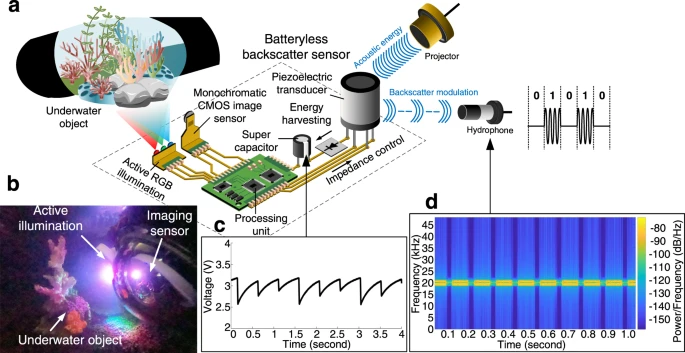MIT News September 26, 2022
Existing methods for underwater imaging are unsuitable for scalable, long-term, in situ observations because they require tethering for power and communication. Researchers at MIT have developed an underwater backscatter imaging, a method for scalable, real-time wireless imaging of underwater environments using fully submerged battery-free cameras that power up from harvested acoustic energy, capture color images using ultra-low-power active illumination and a monochrome image sensor and communicate wirelessly at net-zero-power via acoustic backscatter. They demonstrated wireless battery-free imaging of animals, plants, pollutants, and localization tags in enclosed and open-water environments. The method’s self-sustaining nature makes it desirable for massive, continuous, and long-term ocean deployments with many applications. The device could help scientists explore unknown regions of the ocean, track pollution, or monitor the effects of climate change, imaging underwater environments for marine sciences, sustainability, climatology, defense, robotics, geology, space exploration, and food security…read more. Open Access TECHNICAL ARTICLE

Overview of underwater backscatter imaging. Credit: Nature Communications volume 13, Article number: 5546 (2022)